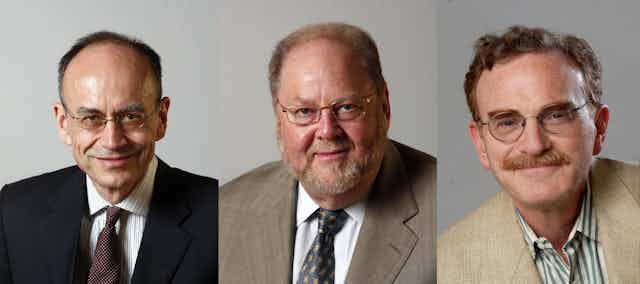The 2013 Nobel Prize in Medicine has been awarded to Thomas Südhof, James Rothman and Randy Schekman for their discoveries of how the transport mechanism in cells works.
Cells are the basic units of life. Each of the billions of cells that make up the human body are packed with machinery to help them perform their special roles. Brain cells (neurons), for instance, need to produce and release neurotransmitters to pass important signals to other brain cells. Other key chemicals such as enzymes and hormones also need to be similarly moved.
Before the work of these pioneering scientists, others had discovered that tiny fat globules called vesicles were involved in the transport system. But little was known about how these vesicles perform their job, delivering key chemicals at the right place and at the right time.
Fascinated by this problem, in the 1970s, Schekman, now at the University of California, Berkeley, worked with yeast cells to figure out the details. He used cells with defective transport machinery to reveal the genes responsible for causing the problems. These genes fell in three classes, each handling a different part of the tightly regulated transport system.
Kathryn Ayscough, a molecular biologist at the University of Sheffield, said, “I still work with yeast cells to understand how cells work. This recognition with a Nobel Prize shows how elegant studies based on simple organisms can reveal intricate details of how all cells work.”
Rothman, now at Yale University, wanted to investigate further. At the time it was believed that the tightly bound space within a cell was somehow responsible in helping each vesicle reach its particular target. But by isolating key proteins that he believed were involved in vesicle transportation, Rothman discovered that the transport system worked perfectly even in a test-tube.
It turned out that the genes identified by Schekman also coded for the proteins Rothman isolated. “Taking different approaches to explain the same phenomenon is often the best way of doing science,” Mike Cousin, a cell biologist at the University of Edinburgh said.
With the cell’s internal machinery somewhat understood, Südhof, now at Stanford University, was interested in finding out how neurotransmitters were released in such a precise manner in neurons. This carefully orchestrated transfer of neurotransmitters is the basis of how our brain functions.
He found that when electrical signals travel along a neuron, they attract calcium ions and enter the cell through temporarily activated channels. These calcium ions activate proteins on the surface of the vesicles, which forces them to fuse with the membrane to off-load their fill of neurotransmitters. Südhof’s work identified the proteins involved in the fusion process.
“Without his work, we would still be looking for the molecules responsible in the fusion process,” Cousin said. Instead, in the years since Südhof’s work was published, researchers have identified that many neurodegenerative diseases, such as Alzheimer’s, are caused by the malfunctioning of fusion proteins.
“The prize-winning work shows it often takes a long time for basic research to be recognised for its impact,” Ayscough said. The researchers set out to understand how a cell works, but their work is now being used to develop medicines for some of the most debilitating diseases.

